ACROSSER AR-B1423
Specifications
System Chipset
STPC Consumer II
Form Factor
PC/104 Standard
Ethernet Chipset
Intel 82559ER
BIOS
Flash BIOS AMI.
CPU
Consumer II/Elite PC-133 BGA.
Dimensions
90.2mm x 95.9mm (3.5” X 3.7”)
Ethernet
RTL82559ER chipset, supports 10/100M baseT with RJ-45 connector
Expansion Bus
PC/104.
Keyboard/Mouse
PS/2 compatible 6-pin mini-DIN connector.
PC Board
10 layers, EMI considered
Power Connector
One 4-pin Wafer Connector.
Power Req.
+5V-1.4A maximum and 12V –0.01A maximum.
Processor
STPC Elite
RAM Memory
one SO-DIMM socket.
RTC
Chipset including, Support ACPI function with 7 years data retention.
SSD
Support one socket for Disk On Chip.
Super I/O
Winbond 83977F-A; 1 EIDE (Ultra DMA33)– with one 2.0 mm 44-pin connector; 1 FDC – with 2.0 mm 34-pin connector; 1 Parallel – with 2.54 mm 26-pin connector (supports SPP/EPP/ECP mode); 1 RS-232C/RS485 –COM1 Share with 485; 1 RS-232C /Touch Screen – with 2.0 mm 10-pin connector
VGA Interface
CRT-D-SUB 15pin female connector at bracket.
VGA Memory
UMA, shared system memory up to 4MB; Supports CRT interface.
Watchdog
Software programmable 1~63sec.
Features
- 10/100M-Base Ethernet.
- 90.2mm x 95.9mm (3.5” X 3.7”)
- AMI BIOS.
- Compact Flash (AR-B9462A) optional.
- Consumer II/Elite PC-133 BGA
- One SO-DIMM socket.
- Power Req.: +5V-1.4A maximum and 12V –0.01A maximum.
- Supports DOC Flash Disk.
Datasheet
Extracted Text
AR-B1423
INDUSTRIAL GRADE
CPU BOARD
User’ s Guide
Edition: 1.01
Book Number: AR-B1423-03.0801
AR-B1423 User’s Guide
Table of Contents
0. PREFACE.....................................................................................................................................................................2
0.1COPYRIGHT NOTICE AND DISCLAIMER................................................................................................................2
0.2 WELCOME TO THE AR-B1423 CPU BOARD .........................................................................................................2
0.3 BEFORE YOU USE THIS GUIDE ............................................................................................................................2
0.4 RETURNING YOUR BOARD FOR SERVICE ..........................................................................................................2
0.5 TECHNICAL SUPPORT AND USER COMMENTS..................................................................................................2
0.6 ORGANIZATION.......................................................................................................................................................3
0.7 STATIC ELECTRICITY PRECAUTIONS ..................................................................................................................3
1. OVERVIEW...................................................................................................................................................................4
1.1 SPECIFICATIONM ...................................................................................................................................................4
1.2 PACKING LIST .........................................................................................................................................................4
1.3 FEATURES...............................................................................................................................................................5
1.4 POINT FOR ATTENTION .........................................................................................................................................5
2. SYSTEM CONTROLLER .............................................................................................................................................6
2.1 POWERFUL X86 PROCESSOR ..............................................................................................................................6
2.2 64-BIT SDRAM UMA CONTROLLER.......................................................................................................................7
2.3 CRT CONTROLLER.................................................................................................................................................8
2.4 2D GRAPHICS ENGINE...........................................................................................................................................9
2.5 INTERRUPT CONTROLLER....................................................................................................................................9
2.6 DMA CONTROLLER ..............................................................................................................................................10
2.7 TIMER / COUNTERS ............................................................................................................................................. 11
2.8 IDE CONROLLER .................................................................................................................................................. 11
2.9 OPTIONAL 16-BIT LOCAL BUS INTERFACE........................................................................................................ 11
2.10 ISA MASTER / SLAVE.......................................................................................................................................... 11
2.11 PCI MASTER / SLAVE / ARBITER .......................................................................................................................12
3. SETTING UP THE SYSTEM.......................................................................................................................................13
3.1 OVERVIEW ............................................................................................................................................................13
3.2 SYSTEM SETTING ................................................................................................................................................13
3.2.1 PC/104 Connector .................................................................................................................................................................. 14
3.2.2 FDD Port Connector (FDD1)................................................................................................................................................... 15
3.2.3 Ethernet RJ-45 Connector (LAN1) .......................................................................................................................................... 16
3.2.4 PS/2 Mouse & Keyboard Connector (KM1)............................................................................................................................. 16
3.2.5 Reset Header (RST1) ............................................................................................................................................................. 16
3.2.7 Power Connector (PWR1 & PWR2 & PWR3).......................................................................................................................... 16
3.2.8 Touch Screen Connector (J4 & J5) ......................................................................................................................................... 17
3.2.9 D.O.C. Memory Bank Address Select (JP1)............................................................................................................................ 17
3.2.10 Multi-Function Port Connector (CN1) .................................................................................................................................... 18
3.2.11 LCD Supported Voltage LCD1 Select (JP2).......................................................................................................................... 19
3.2.12 LCD Panel Display Connector (LCD1) .................................................................................................................................. 20
3.2.13 Hard Disk (IDE1) Connector ................................................................................................................................................. 21
3.3 WATCHDOG TIMER...............................................................................................................................................22
3.3.1 Watchdog Timer Setting ......................................................................................................................................................... 22
3.3.2 Watchdog Timer Trigger ......................................................................................................................................................... 23
4. INSTALLATION..........................................................................................................................................................24
4.1 OVERVIEW ............................................................................................................................................................24
4.2 UTILITY CD ............................................................................................................................................................24
4.2.1 Driver Installation.................................................................................................................................................................... 24
5. BIOS CONSOLE.........................................................................................................................................................25
5.1 BIOS SETUP OVERVIEW ......................................................................................................................................25
5.2 STANDARD CMOS SETUP....................................................................................................................................26
5.3 ADVANCED CMOS SETUP ...................................................................................................................................27
5.4 ADVANCED CHIPSET SETUP...............................................................................................................................29
5.5 POWER MANAGEMENT .......................................................................................................................................30
5.6 PCI/PLUG AND PLAY ............................................................................................................................................31
5.7 PERIPHERAL SETUP ............................................................................................................................................32
5.8 PASSWORD SETTING...........................................................................................................................................33
5.9 LOAD DEFAULT SETTING.....................................................................................................................................33
5.9.1 Auto Configuration with Optimal Setting.................................................................................................................................. 33
5.9.2 Auto Configuration with Fail Safe Setting ................................................................................................................................ 33
5.10 BIOS EXIT ............................................................................................................................................................33
5.10.1 Save Settings and Exit.......................................................................................................................................................... 33
5.10.2 Exit Without Saving............................................................................................................................................................... 34
5.11 BIOS UPDATE ......................................................................................................................................................34
1
AR-B1423 User’s Guide
0. PREFACE
0.1COPYRIGHT NOTICE AND DISCLAIMER
February 2002
This document is copyrighted, 2001 by Acrosser Technology Co., Ltd. All rights are reserved. No part of this
manual may be reproduced, copied, transcribed, stored in a retrieval system, or translated into any language or
computer language in any form or by any means, such as electronic, mechanical, magnetic, optical, chemical,
manual or other means without the prior written permission of original manufacturer.
Acrosser Technology assumes no responsibility or warranty with respect to the content in this manual and
specifically disclaims any implied warranties of merchantability or fitness for any particular purpose. Furthermore,
Acrosser Technology reserves the right to make improvements to the products described in this manual at any
times without notice. Such revisions will be posted on the Internet (WWW.ACROSSER.COM) as soon as
possible.
Possession, use, or copying of the software described in this publication is authorized only pursuant to a valid
written license from Acrosser or an authorized sub licensor.
ACKNOWLEDGEMENTS
Acrosser, AMI, IBM PC/AT, ALI, Windows 3.1, MS-DOS, …are registered trademarks.
All other trademarks and registered trademarks are the property of their respective holders.
0.2 WELCOME TO THE AR-B1423 CPU BOARD
This guide introduces the Acrosser AR-B1423 CPU board.
The information provided in this manual describes about the card functions and features. It also helps you start,
set up and operate your AR-B1423. General system information can also be found in this publication.
0.3 BEFORE YOU USE THIS GUIDE
Please refer to the Chapter 3, “Setting Up The System” in this guide, if you have not already installed this AR-
B1423. Check the packing list before you install and make sure the accessories are completely included.
The AR-B1423 CD provides the newest information about the card. Please refer to the files of the enclosed
utility CD. It contains the modification, hardware & software information. And it also has updated the product
functions that may not be mentioned here.
0.4 RETURNING YOUR BOARD FOR SERVICE
If your board requires any services, contact the distributor or sales representative from whom you purchased the
product for service information. If you need to ship your board to us for service, be sure it is packed in a protective
carton. We recommend that you keep the original packaging for this purpose.
You can assure efficient servicing for your product by following these guidelines:
1. Include your name, address, daytime telephone and facsimile numbers and E-mail.
2. A description of the system configuration and/or software at the time is malfunction,
3. A brief description of the problem occurred.
0.5 TECHNICAL SUPPORT AND USER COMMENTS
User’s comments are always welcome as they assist us in improving the quality of our products and the
readability of our publications. They create a very important part of the input used for product enhancement and
revision.
We may use and distribute any of the information you provide in anyway appropriate without incurring any
obligation. You may, of course, continue to use the information you provide.
If you have any suggestions for improving particular sections or if you find any errors on it, please send your
comments to Acrosser Technology Co., Ltd. or your local sales representative and indicate the manual title and
book number.
Internet electronic mail to: webmaster@acrosser.com
Check our FAQ sheet for quick fixes to known technical problems.
2
AR-B1423 User’s Guide
0.6 ORGANIZATION
This manual covers the following topics (see the Table of Contents for a detailed listing):
� Chapter 1, “Overview”, provides an overview of the system features and packing list.
� Chapter 2, “System Controller” describes the major structure.
� Chapter 3, “Setting Up the System”, describes how to adjust the jumper, and the connector’s settings.
� Chapter 4, “Installation”, describes setup procedures including information on the utility diskette.
� Chapter 5, “BIOS Console”, provides the BIOS options settings.
0.7 STATIC ELECTRICITY PRECAUTIONS
Before removing the board from its anti-static bag, read this section about static electricity precautions.
Static electricity is a constant danger to computer systems. The charge that can build up in your body may be
more than sufficient to damage integrated circuits on any PC board. Therefore, it is very important to observe
basic precautions whenever you use or handle computer components. Although areas with humid climates are
much less prone to static build-up, it is always best to safeguard against accidents that may result in expensive
repairs. The following measures should be sufficient to protect your equipment from static discharge:
• Touch a grounded metal object to discharge the static electricity in your body (or ideally, wear a grounded
wrist strap).
• When unpacking and handling the board or other system components, place all materials on an anti-static
surface.
• Be careful not to touch the components on the board, especially the “golden finger” connectors on the bottom
of the board.
3
AR-B1423 User’s Guide
1. OVERVIEW
AR-B1423 Is a Consumer II /Elite PC-133 CPU Board with Ethernet, DOC, and Compact Flash (option).
This chapter provides an overview of your system features and capabilities. The following topics are covered:
� Specification
� Packing List
� Features
� Point for attention
1.1SPECIFICATION
� CPU: Consumer II/Elite PC-133 BGA.
� RAM Memory: one SO-DIMM socket.
� SSD: Support one socket for Disk On Chip.
� Watchdog: Software programmable 1~63sec.
� VGA Memory: AR-B1423 A -- UMA, shared system memory up to 4MB
Supports CRT interface.
AR-B1423B – Embedded 2MB SDRAM Video memory
Supports CRT interface.
� VGA Interface: AR-B1423A – CRT-D-SUB 15pin female connector at bracket.
AR-B1423B– CRT-D-SUB 15pin female connector at bracket.
LCD with 2.0mm 44-pin Header connector.
� Ethernet: RTL82559ER chipset, supports 10/100M baseT with RJ-45 connector
� Super I/O: Winbond 83977F-A
1 EIDE (Ultra DMA33)– with one 2.0 mm 44-pin connector
1 FDC – with 2.0 mm 34-pin connector.
1 Parallel – with 2.54 mm 26-pin connector (supports SPP/EPP/ECP mode).
1 RS-232C/RS485 –COM1 Share with 485
1 RS-232C /Touch Screen – with 2.0 mm 10-pin connector
RS-232C is selectable by jumper and use the same connector.
Touch Screen with 2.0mm 3-pin JST connector.
� BIOS: Flash BIOS AMI.
� Keyboard/Mouse: PS/2 compatible 6-pin mini-DIN connector.
� RTC: Chipset including, Support ACPI function with 7 years data retention.
� Expansion Bus: PC/104.
� Power Connector: One 4-pin Wafer Connector.
� Power Req.: +5V-2A maximum and 12V –0.01A maximum.
� PC Board: 10 layers, EMI considered
� Dimensions: 90.2mm x 95.9mm (3.5” X 3.7”)
1.2 PACKING LIST
Some accessories are included with the system. Before AR-B1423 has been installed, please take a moment to
make sure that the following items have been included inside the AR-B1423 package.
� The quick setup manual
� AR-B1423 CPU board
� Hard disk drive adapter cable for 2.5” HDD
� Floppy disk drive adapter cable.
� 4-in-1 adapter cable for COM1/COM2, parallel, and VGA
� PS/2 Y-type cable
� Ethernet adapter cable
� Power cable
� Software utility CD
� Screw kit
4
AR-B1423 User’s Guide
1.3 FEATURES
The system provides a number of special features that enhance its reliability, ensure its long-term availability, and
improve its expansion capabilities, as well as its hardware structure.
� Consumer II/Elite PC-133 BGA
� One SO-DIMM socket.
� Supports DOC Flash Disk.
� 10/100M-Base Ethernet.
� Compact Flash (AR-B9462A) optional.
� AMI BIOS.
� Power Req.: +5V-1.4A maximum and 12V –0.01A maximum.
� 90.2mm x 95.9mm (3.5” X 3.7”)
1.4 POINT FOR ATTENTION DIMENSIONS
The AR-B1423A CPU is a consumer II with C4 as a version that included some bugs on it. The effect is the use of
floppy in WIN95 would be unable. The bug can be revised in CPU with C5 as a version. But according to ST as
the original manufacturer, C5 just can normally be produced at least in October. The bug still exists so it is better
to use the C4. Therefore, we decided to adopt no support as our temporary strategy.
In AR-B1423B section, we have to install WIN 95, and then set up the Floppy driver as the additional step in order
to drive the AR-B1423B Floppy device properly.
The AR-B1423A& AR-B1423B can access from 64MB to 128MB of external memory.
5
AR-B1423 User’s Guide
2. SYSTEM CONTROLLER
This chapter describes the main structure of the AR-B1423 CPU board. The following topics are covered:
� Powerful x86 Processor
� 64-Bit SDRAM UMA Controller
� CRT Controller
� 2D Graphics Engine
� Interrupt Controller
� DMA Controller
� Timer/Counters
� IDE Controller
� Optional 16-Bit Local Bus Interface
� ISA Master/Slave
� PCI Master/Slave/Arbiter
2.1 POWERFUL X86 PROCESSOR
The AR-B1423 uses the Consumer II/Elite PC-133 BGA, it is an advanced 64-bit x86 processor block compatible
processor offering high performance, fully accelerated 2D graphics, a 64-synchronous DRAM controller, all on a
single chip. It includes a 64-bit SDRAM controller, a high speed PCI local-bus controller and Industry standard PC
chip set functions (Interrupt controller, DMA Controller, Interval timer and ISA BUS).
� Fully static 32-bit five-stage pipeline, x86 processor fully PC compatible.
� Can access up to 128M of external memory.
� 8K byte unified instruction and data cache with write back and write through capability.
� Parallel processing integral floating-point unit, with automatic power down.
� Runs up to 133 MHz (x2)
� Fully static design for dynamic clock control.
� Low power and system management modes.
� Optimized design for 2.5 V operations.
6
AR-B1423 User’s Guide
2.2 64-BIT SDRAM UMA CONTROLLER
� 64-bit data bus.
� Up to100 MHz SDRAM clock speed.
� Integrated system memory, graphic frame memory and video frame memory.
� Supports 2MB up to 128 MB system memory
� Supports 16-, 64-, and 128-Mbit SDRAMs.
� Supports 8, 16, 32, 64, and 128 MB DIMMs.
� Supports buffered, non-buffered, and registered DIMMs.
� Four-line write buffers for CPU to SDRAM and PCI to SDRAM cycles.
� Four0line read pre-fetch buffers for PCI masters.
� Programmable latency
� Programmable timing for SDRAM parameters.
� Supports –8, -10, -12, -13, -15 memory parts.
� Supports memory hole between 1 MB and 8 MB for PCI/ISA busses.
The SDRAM controller only supports 64 bit wide Memory Banks.
Four Memory Banks (if DIMMS are used; Single sided or two doubled-sided DIMMs) are supported in the following
configurations.
Memory Device
Number Organization
Bank size Size
1Mx64 4 1Mx16
2Mx64 8 2Mx8 16Mbits
4Mx64 16 4Mx4
4Mx64 4 2Mx16x2
8Mx64 8 4Mx8x2
16xM64 16 8Nx4x2
64Mbits
4Mx64 4 1Mx16x4
8Mx64 8 2Mx8x4
32Mx64 16 4Mx4x4
16Mx64 8 2Mx16x2
128Mbits
32Mx64 16 4Mx8x4
Memory configurations
The SDRAM Controller supports buffered or unbuffered SDRAM but not EDO or FPM modes. SDRAMs must
support Full Page Mode Type access.
The STPC Memory Controller provides various programmable SDRAM parameters to allow the SDRAM interface
to be optimized for different processor bus speeds SDRAM grades and CAS Latency
7
AR-B1423 User’s Guide
This chapter defines the STPC Consumer-II Strap Options and their location. Some strap options are left
programmable for future versions of silicon.
Strap Options
2.3 CRT CONTROLLER
� AR-B1423A Integrated 135 MHz triple RAMDAC allowing for 1024 x768 75 Hz displays.
� Requires external frequency synthesizer and reference sources.
� 8-bit, 16-bit, 24-bit pixels.
� Interlaced or non-interlaced output.
� Requires no external frequency synthesizer.
� Requires only external reference source.
* AR-B1423B has a special VGA controller C&T69000 supported CRT and LCD.
8
AR-B1423 User’s Guide
2.4 2D GRAPHICS ENGINE
� 64-bit windows accelerator.
� Backward compatibility to SVGA standards.
� Hardware acceleration for text, bitblts, transparent blts and fills
� Up to 64 x 64 graphics hardware cursor.
� Up to 4MB long linear frame buffer.
� 8-bit, 16-bit and 24-bit pixels.
� Drivers available for various OSes.
2.5 INTERRUPT CONTROLLER
Most of the IPC signals are multiplexed: Interrupt inputs, DMA Request inputs, DMA Acknowledge outputs. The
figure below describes a complete implementation of the IRQ [15:0] time multiplexing. When an interrupts line is
used internally, the corresponding input can be grounded. In most of the embedded designs, only few interrupts
lines are necessary and the glue logic can be simplified.
Typical IRQ multiplexing
When the interface is integrated into the STPC, the corresponding interrupt line can be grounded as it is connected
internally.
For example, if the integrated IDE controller is activated, the IRQ [14] and IRQ [15] inputs can be grounded.
9
AR-B1423 User’s Guide
2.6 DMA CONTROLLER
� DMA channel
� 2X8237/AT compatible 7-channel DMA controller integrated into the STPC.
� 2X8259/AT compatible interrupt Controller integrated into the STPC.
16 interrupt inputs – ISA and PCI.
� Three 8254 compatible Timer/Counters integrated into the STPC.
� Co-processor error support logic.
The figure below describes a complete implementation of the external glue logic for DMA Request time-
multiplexing and DMA Acknowledge demultiplexing. Like for the interrupt lines, this logic can be simplified when
only few DMA channels are used in the application. This glue logic is not needed in Local bus mode and it does not
support DMA transfers.
Typical DMA multiplexing and demultiplexing
10
AR-B1423 User’s Guide
2.7 TIMER / COUNTERS
� System Activity Detection.
� Three power down timers.
� Doze timer for detecting lack of system activity for short durations.
� Stand-by timer for detecting lack of system activity for medium durations.
� Suspend timer for detecting lack of system activity for long durations.
� Housekeeping activity detection.
� Housekeeping timer to cope with short bursts of housekeeping activity while dozing or in stand-by state.
2.8 IDE CONROLLER
� Supports PIO.
� Transfer Rates to 22 Mbytes/sec.
� Supports up to 2 IDE devices.
� Concurrent channel operation (PIO modes) –
4 x 32-Bit Buffer FIFOs per channel.
� Support for PIO mode 3 & 4.
� Individual drive timing for all two IDE devices.
� Supports both legacy & native IDE modes.
� Supports hard drive larger than 528MB.
� Support for CD-ROM and tape peripherals.
� Backward compatibility with IDE (ATA-1).
� Drivers for Windows and other Operating Systems.
2.9 OPTIONAL 16-BIT LOCAL BUS INTERFACE
� Multiplexed with ISA/DMA interface.
� Low latency asynchronous bus.
� 22-bit address bus.
� 16-bit data bus with word steering capability.
� Programmable timing (Host clock granularity).
� Two Programmable Flash Chip Select.
� Four Programmable I/O Chip Select.
� Supports 32-bit Flash burst.
� Two-level hardware key protection for Flash boot block protection.
� Supports two banks of 16MB flash devices with boot block shadowed to 0x000F0000.
2.10 ISA MASTER / SLAVE
� Generates the ISA clock from either 14.318 MHz oscillator clock or PCI clock.
� Supports programmable extra wait state for ISA cycles.
� Supports I/O recovery time for back-to-back I/O cycles.
� Fast Gate A20 and Fast reset.
� Supports this single ROM that C, D, or E.
Blocks shares with F block BIOS ROM.
� Supports flash ROM.
� Supports ISA hidden refresh.
� Buffered DMA & ISA master cycles to reduce bandwidth utilization of the PCI and Host bus.
11
AR-B1423 User’s Guide
2.11 PCI MASTER / SLAVE / ARBITER
� Fully compliant with PCI 2.1 specification.
� Integrated PCI arbitration interface. Up to 3 masters can connect directly. External PAL allows for greater
then 3 masters.
� Translation of PCI cycles to ISA bus.
� Translation of ISA master initiated cycle to PCI
� Support for burst read/write from PCI master.
� PCI clock is 1/2, 1/3 or 1/4 CPU bus clock.
12
AR-B1423 User’s Guide
3. SETTING UP THE SYSTEM
This section describes pin assignments of on board connector and jumper settings.
� Overview
� System Setting
3.1 OVERVIEW
AR-B1423 is a 486 Grade CPU Board, which supports Ethernet, DOC, SSD, and Compact Flash (AR-B9462A) (option)
functions. This section provides the hardware’s jumper settings, the connectors’ locations, and the pin assignments.
External System Location
3.2 SYSTEM SETTING
Jumper pins allow you to set specific system parameters. Set them by changing the pin location of jumper blocks.
(A jumper block is a small plastic-encased conductor that slips over the pins.) To change a jumper setting, remove
the jumper from its current location with your fingers or small needle-nosed pliers. Place the jumper over the two
pins designated for the desired setting. Press the jumper evenly onto the pins. Be careful not to bend the pins.
CAUTION: Do not touch any electronic components unless you are safely grounded. Wear a grounded wrist strap
or touch an exposed metal part of the system unit chassis. The static discharges from your fingers can
permanently damage electronic components.
13
AR-B1423 User’s Guide
3.2.1 PC/104 Connector
(1) 64 Pin PC/104 Connector Bus A & B (PC1)
2 64
1 63
64 Pin PC/104 Connector
PIN NO SIGNAL PIN NO SIGNAL
1
–IOCHCK 2 GND
3 SD7 4 RSTDRV
5 SD6 6 VCC
7 SD5 8 IRQ9
9 SD4 10 Not Used
11 SD3 12 DREQ2
13 SD2 14 Not Used
15 SD1 16 –ZEROWS
17 SD0 18 (+12V)
19 IOCHRDY 20 GND
21 AEN 22 –SMEMW
23 SA19 24 –SMEMR
25 SA18 26 –IOW
27 SA17 28 –IOR
29 SA16 30 –DACK3
31 SA15 32 DREQ3
33 SA14 34 –DACK1
35 SA13 36 DREQ1
37 SA12 38 –REFRESH
39 SA11 40 SYSCLK
41 SA10 42 IRQ7
43 SA9 44 IRQ6
45 SA8 46 IRQ5
47 SA7 48 IRQ4
49 SA6 50 IRQ3
51 SA5 52 –DACK2
53 SA4 54 TC
55 SA3 56 BALE
57 SA2 58 VCC
59 SA1 60 OSC
61 SA0 62 GND
63 GND 64 GND
14
AR-B1423 User’s Guide
(2) 40 Pin PC/104 Connector Bus C & D (PC1)
1 39
2 40
40 Pin PC/104 Connector
PIN NO SIGNAL PIN NO SIGNAL
1 GND 2 GND
3 –SBHE 4 –MEMCS16
5 LA23 6 –IOCS16
7 LA22 8 IRQ10
9 LA21 10 IRQ11
11 LA20 12 IRQ12
13 LA19 14 IRQ15
15 LA18 16 IRQ14
17 LA17 18 –DACK0
19 –MEMR 20 DREQ0
21 –MEMW 22 –DACK5
23 SD8 24 DREQ5
25 SD9 26 –DACK6
27 SD10 28 DREQ6
29 SD11 30 –DACK7
31 SD12 32 DREQ7
33 SD13 34 VCC
35 SD14 36 –RMASTER
37 SD15 38 GND
39 Not Used 40 GND
3.2.2 FDD Port Connector (FDD1)
The AR-B1423 provides a 34-pin header type connector for supporting up to two floppy disk drives.
To enable or disable the floppy disk controller, please use the BIOS Setup program.
2
1
FDD1: FDD Port connector
PIN NO PIN DEFINITION PIN NO PIN DEFINITION
1 GND 2 DRVEN0
3 GND 4 NC
5 GND 6 DRVEN1
7 GND 8 INDEX#
9 GND 10 MOA#
11 GND 12 DSB#
13 GND 14 DSA#
15 GND 16 MOB#
17 GND 18 DIR#
19 GND 20 STEP#
21 GND 22 WD#
23 GND 24 WE#
25 GND 26 TRACK0#
27 GND 28 WP#
29 GND 30 RDATA#
31 GND 32 HEAD#
33 GND 34 DSKCHG#
FDD Pin Assignment
15
AR-B1423 User’s Guide
3.2.3 Mini-DIN Connector (LAN1)
The LAN1 Mini-DIN headers are the standard network headers. The following table is the pin assignment.
1 7
PIN (LAN1) FUNCTION
1 RTX+
2 RTX-
3 NRX+
4 NRX-
5 Not Used
6 Not Used
7 Not Used
LAN1 Pin Assignment
3.2.4 PS/2 Mouse & Keyboard Connector (KM1)
To use the PS/2 interface, an adapter cable has to be connected to the CN2 (6-pin header type) connector. This
adapter cable is mounted on a bracket and is included in your AR-B1423 package. The connector for the PS/2
KB/mouse is a Mini-DIN 6-pin connector. Pin assignments for the PS/2 port connector are as follows:
PIN# PIN DEFINITION
1 MOUSE DATA
2 KB DATA
3 GND
4 VCC
5 MOUSE CLOCK
6 KB CLOCK
3.2.5 Reset Header (RST1)
Shorting these two pins will reset the system
2 1
RST1
3.2.7 Power Connector (PWR1 & PWR2 & PWR3)
The PWR1 is a 4-pin power connector. PWR2 and PWR3 is 2-pin one. They are the standard connectors on all
Acrosser boards.
4 +12V
3 GND
2 GND 2 GND
2 GND
1 -5V 1 -12V
1 +5V
PWR2 PWR3
PWR1
16
AR-B1423 User’s Guide
3.2.8 Touch Screen Connector (J4 & J5)
1. RXDF
2. TXDF
3 2 1
3. CGND
3.2.9 D.O.C. Memory Bank Address Select (JP1)
This section provides the information about how to use the D.O.C. (Disk On Chip). It divided into two parts:
hardware setting and software configuration.
1 2
3 4
Factory Preset
JP1: D.O.C. Memory Address
JP1 Address Note
1-2
D200:0000
3-4
3-4 CC00:0000
1-2 C800:0000 Factory Preset
X D000:0000
(Only for AR-B1423A)
JP1 Address Note
1-2
D000:0000
3-4
3-4 D200:0000
1-2 D400:0000 Factory Preset
X D600:0000
(Only for AR-B1423B)
Step 1: Use JP1 to select the correct D.O.C. memory
bank address.
Step 2: Insert programmed Disk On Chip into sockets
DOC1 setting as DOC.
Step 3: Line up and insert the AR-B1423A and AR-
B1423B card into slot of your back plane.
17
AR-B1423 User’s Guide
3.2.10 Multi-Function Port Connector (CN1)
1 49
50
2
CN1 COM1/COM2, parallel, and VGA 4-in-1 Connector
PIN PIN
PORT SIGNAL SIGNAL
NO NO
1
DCD1 2 DSR1
3 RXD1 4 RTS1
COM1
5 TXD1 6 CTS1
7 DTR1 8 RI1
9 GROUND 10 CASE GND
11 DCD2 12 DSR2
13 RXD2 14 RTS2
COM2
15 TXD2 16 CTS2
17 DTR2 18 RI2
19 GROUND 20 GROUND
21 STROBE 22 AUTO FORM FEED
23 DATA 0 24 ERROR
25 DATA 1 26 INITIALIZE
27 DATA 2 28 PRINTED SELECT IN
PARALLEL
29 DATA 3 30 DATA 4
31 DATA 5 32 DATA 6
33 DATA 7 34 ACKNOWLEDGE
35 BUSY 36 PAPER
37 GROUND 38 PRINTER SELECT
39 GROUND 40 GROUND
41 RED 42 VGA GROUND
43 GREEN 44 GROUND
VGA
45 BLUE 46 GROUND
47 HORIZONTAL SYNC 48 DDC DATA
49 VERTICAL SYNC 50 DDC CLOCK
18
AR-B1423 User’s Guide
(1) RS-232/RS-485 Select for COM1 (P6 & P7)
The P6 &P7 jumpers are designed for selecting the use of 0n-board RS-232 or RS-485 for the COM1
P7
P6
1 2 1
1 2
1
A
A
B B
C
C
RS-232 RS-485
Factory Preset
(2) RS-485 Terminator Select (J2)
When there is only one line the setting should be left off (please take off the jumper), if multiple blocks are used on
a single line this should be set to “ON”(place a jumper) in order to properly terminate the connection for better
transmission.
2 1 2 1
OFF ON
Factory Preset
(3) RS-485 Header (J3)
J3 1. N485+
2. N485-
3 2 1
3. GND
3.2.11 LCD Supported Voltage LCD1 Select (JP2)
(Only for AR-B1423B)
1 2 3 1 2 3
3.3V (Factory Preset) 5V
19
AR-B1423 User’s Guide
3.2.12 LCD Panel Display Connector (LCD1)
(Only for AR-B1423B)
The pin assignment of LCD connector is shown below:
LCD1: LCD Display Connector
� The resolution can support CRT on 640*480
800*600
1024*768
1280*1024
� The resolution can support LCD on 640*480
800*600
1024*768
SIGNAL PIN SIGNAL
PIN
1 FP0 2 FP16
3 FP1 4 FP17
5 FP2 6 FP18
7 FP3 8 FP19
9 FP4 10 FP20
11 FP5 12 FP21
13 FP6 14 FP22
15 FP7 16 FP23
17 LCDVDD 18 LCDVDD
19 FP8 20 FP24
21 FP9 22 FP25
23 FP10 24 FP26
25 FP11 26 FP27
27 FP12 28 FP28
29 FP13 30 FP29
31 FP14 32 FP30
33 FP15 34 FP31
35 FP34 36 FP32
37 FP35 38 FP33
39 M/DE 40 GND
41 VCC 42 FLM
43 VCC 44 GND
45 ENABLK 46 SHFCLK
47 ENAVEE 48 GND
49 (+12V) 50 LP
51 (+12V) 52
LCD Pin Assignment
20
AR-B1423 User’s Guide
3.2.13 Hard Disk (IDE1) Connector
44-Pin Hard Disk Connector (IDE1)
AR-B1423 provides 44-pin connector (IDE1) interface to connect with the hard disk device. Furthermore, user could
also apply AR-B9462A (option) to connect with Compact Flash storage device.
43
1
44 2
Pin # Signal Pin # Signal
1 RESET 2 GROUND
3 DATA 7 4 DATA 8
5 DATA 6 6 DATA 9
7 DATA 5 8 DATA 10
9 DATA 4 10 DATA 11
11 DATA 3 12 DATA 12
13 DATA 2 14 DATA 13
15 DATA 1 16 DATA 14
17 DATA 0 18 DATA 15
19 GROUND 20 NOT USED
21 IDEDREQ 22 GROUND
23 -IOW A 24 GROUND
25 -IOR A 26 GROUND
27 IDEIORDYA 28 GROUND
29 -DACKA 30 GROUND
31 AINT 32 GROUND
33 SA 1 34 Not Used
35 SA 0 36 SA 2
37 CS 0 38 CS 1
39 HDD LED 40 GROUND
41 VCC 42 VCC
43 GROUND 44 Not Used
1.14 Clear CMOS Jumper(J7)
1 2 3 1 2 3
1-2:Normal(Factory Preset) 2-3:Clear
1.15 Hardisk LED Header (J6)
PIN NO PIN DEFINITION
1 HLED+
3 4
2 HLED-
1 2
3 PWLED-
4 PWLED+
J6
21
AR-B1423 User’s Guide
1.16 Power LED Header (PLED1)
1
1.PO WER LED
2.G ND
LED
3.3 WATCHDOG TIMER
This section describes the use of Watchdog Timer, including disable, enable, and trigger. AR-B1423 is equipped
with a programmable time-out period watchdog timer that occupies I/O port 443H. Users can use simple program
to enable the watchdog timer. Once you enable the watchdog timer, the program should trigger it every time before
it times out. Watchdog Timer will generate a response (system or IRQ) due to system fails to trigger or disable
watchdog timer before preset timer, times out.
Time Base
Enable(D7)
Time Factor
(D0-D5) Watchdog
Register
Counter and
Write and
Compartor
Trigger
RESET
Watchdog Block Diagram
3.3.1 Watchdog Timer Setting
The watchdog timer is a circuit that maybe be used from your program software to detect crash or hang up. The
Watchdog timer is automatically disabled after reset. Once you enabled the watchdog timer, your program should
trigger the watchdog timer every time before it times out. After you trigger the watchdog timer, the timer will be set
to zero and start to count again. If your program fails to trigger the watchdog timer before times out, it will generate
a reset pulse to reset the system or trigger the IRQ 9 signal in order to tell your system that the watchdog time is
out.
Please refer to the following table in order to properly program Watchdog function
D7 D6 D5 D4 D3 D2 D1 D0
1 Enable Reset Time period
0 Disable IRQ 9
Users could test watchdog function under ‘Debug’ program as follows:
C:>debug
� O 443 CFH
Generally, watchdog function would
reset system after 15 seconds
� O 443 40H
Disable watchdog function
22
AR-B1423 User’s Guide
C:>debug
� O 443 88H
Generally, watchdog function would
generate IRQ 9 after 8 seconds
� O 443 40H
Disable watchdog function
3.3.2 Watchdog Timer Trigger
After you enable the watchdog timer, your program must write the same factor as triggering to the watchdog timer
at least once during every time-out period. You can change the time-out period by writing another timer factor to
the watchdog register at any time, and you must trigger the watchdog during every new time-out period in next
trigger.
C:>debug
� O 443 88H
Generally, watchdog function would
generate IRQ 9 after 8 seconds
� O 443 83H
Disable last watchdog function.
Watchdog function would
Generate IRQ 9 after 3 seconds.
C:>debug
� O 443 CFH
Generally, watchdog function would
reset system after 15 seconds
� O 443 C3H
Disable last watchdog function.
Watchdog function would reset
system after 3 seconds.
23
AR-B1423 User’s Guide
4. INSTALLATION
This chapter describes the installation procedure. The following topics are covered:
� Overview
� Utility CD
4.1 OVERVIEW
This chapter provides information for you to set up a working system based on the AR-B1423 CPU board. Please
carefully read the details of the CPU board’s hardware descriptions before installation. Pay special attention to the
jumper settings, switch settings and cable connections.
Follow steps listed below for proper installation:
Step 1: Read the CPU board’s hardware description in this manual.
Step 2: Set jumpers.
Step 3: Make sure that the power supply connected to your AR-B1423 CPU board is turned off.
Step 4: Connect all necessary cables. Make sure that the HDD; serial and parallel cables are connected to
pin 1 of the related connector (not upside down).
Step 5: Connect the hard disk flat cables from the CPU board to the drives. Connect a power source to
drive.
Step 6: Plug the keyboard into the keyboard connector.
Step 7: Turn on the power.
Step 8: Configure your system with the BIOS Setup program (section 5) then re-boot your system.
Step 9: If the CPU board does not work, turn off the power and read the hardware description carefully
again.
Step 10: If the CPU board still does not perform properly, return the board to your dealer for immediate
service.
4.2 UTILITY CD
The AR-B1423 provides a piece of which contains necessary drivers and utility for installing AR_B1423.
4.2.1 Driver Installation
Generally, the CD that comes with AR-B1423 should be able to carry out ‘Auto run’ function, please follows the
instruction displayed on the screen to install drives. In case, if the ‘Auto run’ function is fail, please execute
‘Setup.exe’ program under root directory of the CD.
24
AR-B1423 User’s Guide
5. BIOS CONSOLE
This chapter describes the AR-B1423 BIOS menu displays and explains how to perform common tasks needed to
get up and running, and presents detailed explanations of the elements found in each of the BIOS menus. The
following topics are covered:
� BIOS Setup Overview
� Standard CMOS Setup
� Advanced CMOS Setup
� Advanced Chipset Setup
� Power Management Setup
� PCI/Plug and Play Setup
� Peripheral Setup
� Password Setting
� Load Default Setting
� BIOS Exit
5.1 BIOS SETUP OVERVIEW
The BIOS is a program used to initialize and set up the I/O system of the computer, which includes the ISA bus
and connected devices such as the video display, diskette drive, and the keyboard.
The BIOS provides a menu-based interface to the console subsystem. The console subsystem contains special
software, called firmware that interacts directly with the hardware components and facilitates interaction between
the system hardware and the operating system.
The BIOS default values ensure that the system will function at its normal capability. In the worst situation the user
may have corrupted the original settings set by the manufacturer.
After the computer is turned on, the BIOS will perform diagnostics on the system and display the size of the
memory that is being tested. Press the [Del] key to enter the BIOS Setup program, and then the main menu will
show on the screen.
The BIOS Setup main menu includes some options. Use the [Up/Down] arrow key to highlight the option that you
wish to modify, and then press the [Enter] key to select the option and configure the functions.
Figure 5-1 BIOS: Setup Main Menu
CAUTION: 1. AR-B1423 BIOS the factory-default setting is used to the
Frequently asked questions
How does Industrial Trading differ from its competitors?

Is there a warranty for the AR-B1423?

Which carrier will Industrial Trading use to ship my parts?

Can I buy parts from Industrial Trading if I am outside the USA?

Which payment methods does Industrial Trading accept?

Why buy from GID?

Quality
We are industry veterans who take pride in our work

Protection
Avoid the dangers of risky trading in the gray market

Access
Our network of suppliers is ready and at your disposal

Savings
Maintain legacy systems to prevent costly downtime

Speed
Time is of the essence, and we are respectful of yours



 Manufacturers
Manufacturers
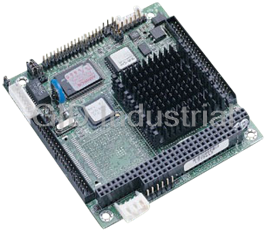

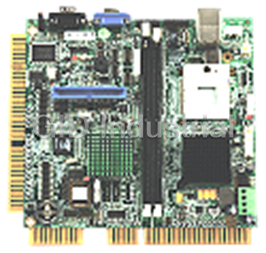
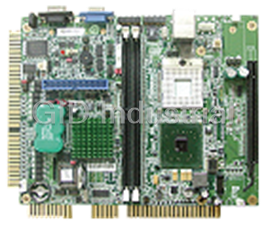
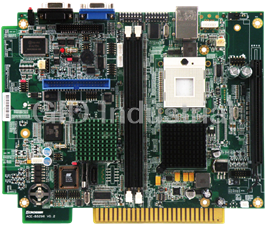
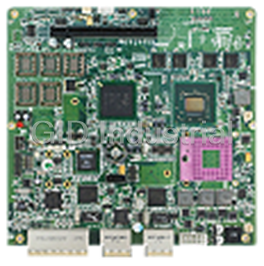
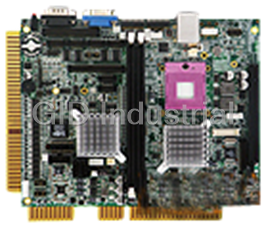
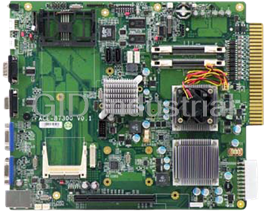




What they say about us
FANTASTIC RESOURCE
One of our top priorities is maintaining our business with precision, and we are constantly looking for affiliates that can help us achieve our goal. With the aid of GID Industrial, our obsolete product management has never been more efficient. They have been a great resource to our company, and have quickly become a go-to supplier on our list!
Bucher Emhart Glass
EXCELLENT SERVICE
With our strict fundamentals and high expectations, we were surprised when we came across GID Industrial and their competitive pricing. When we approached them with our issue, they were incredibly confident in being able to provide us with a seamless solution at the best price for us. GID Industrial quickly understood our needs and provided us with excellent service, as well as fully tested product to ensure what we received would be the right fit for our company.
Fuji
HARD TO FIND A BETTER PROVIDER
Our company provides services to aid in the manufacture of technological products, such as semiconductors and flat panel displays, and often searching for distributors of obsolete product we require can waste time and money. Finding GID Industrial proved to be a great asset to our company, with cost effective solutions and superior knowledge on all of their materials, it’d be hard to find a better provider of obsolete or hard to find products.
Applied Materials
CONSISTENTLY DELIVERS QUALITY SOLUTIONS
Over the years, the equipment used in our company becomes discontinued, but they’re still of great use to us and our customers. Once these products are no longer available through the manufacturer, finding a reliable, quick supplier is a necessity, and luckily for us, GID Industrial has provided the most trustworthy, quality solutions to our obsolete component needs.
Nidec Vamco
TERRIFIC RESOURCE
This company has been a terrific help to us (I work for Trican Well Service) in sourcing the Micron Ram Memory we needed for our Siemens computers. Great service! And great pricing! I know when the product is shipping and when it will arrive, all the way through the ordering process.
Trican Well Service
GO TO SOURCE
When I can't find an obsolete part, I first call GID and they'll come up with my parts every time. Great customer service and follow up as well. Scott emails me from time to time to touch base and see if we're having trouble finding something.....which is often with our 25 yr old equipment.
ConAgra Foods